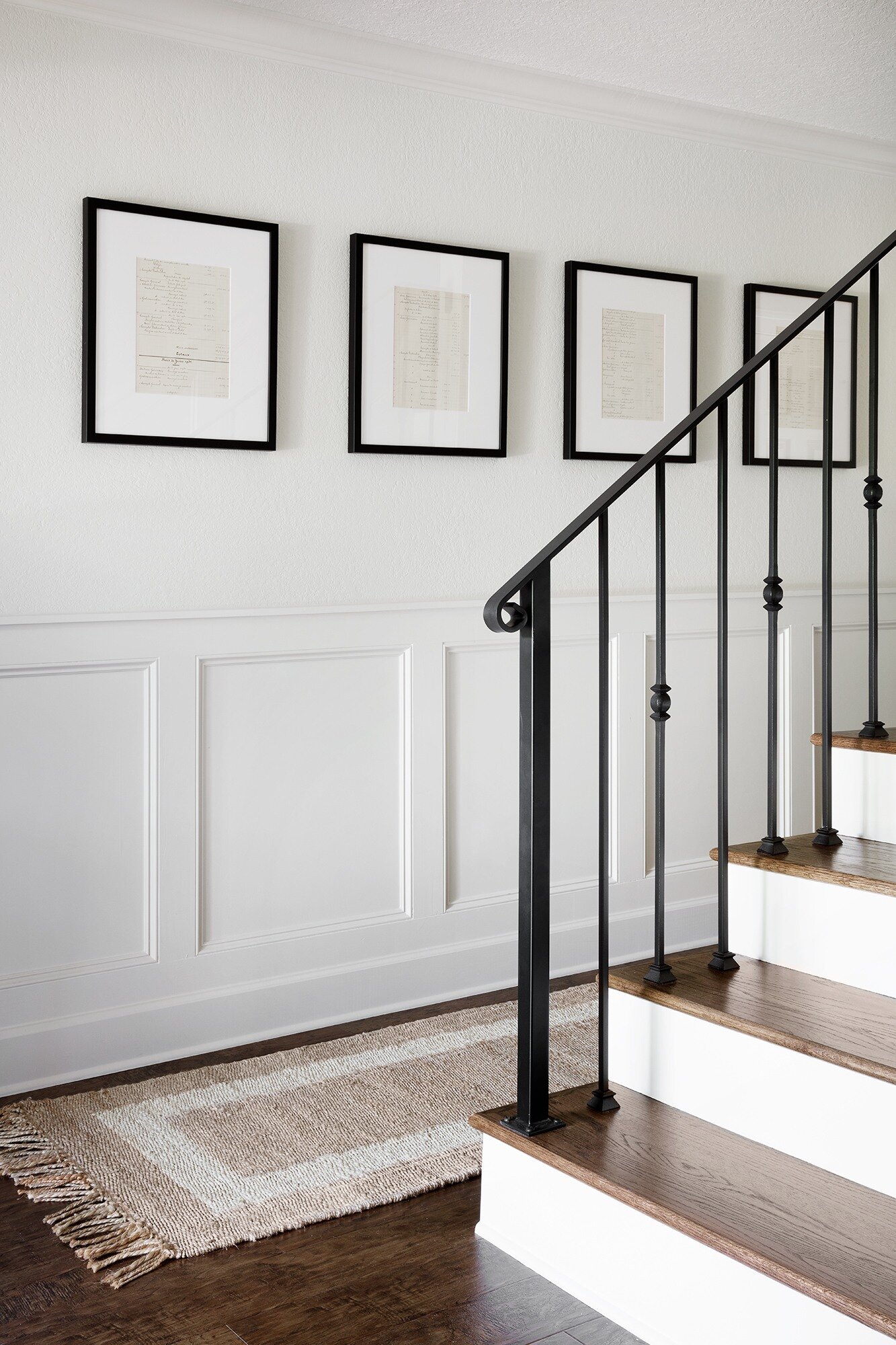The Complete Guide to Millwork & Wood Paneling
Interior wood paneling is making a comeback and we’re thankful that it is. With a large variety of designs to choose from, adding contemporary wood paneling into your design is the perfect way to give your home a facelift—and it might even be the missing piece you need to complete your dream home aesthetic!
Are you ready to visit the wondrous world of wood paneling? Here are 7 classic and stunning ideas for some interior renovation inspiration.
1. Wainscotting
Wainscoting is a style of wood paneling on the lower half or one-third of the wall, usually present around the entirety of the room.
Wainscoting was used in the 18th century as a stylish way to insulate a room, due to the lack of central heating at the time. In terms of interior design, wainscoting has never truly gone out of style, but in modern times it is used to achieve a classic and timeless look in the home and can be incorporated into any style, be it farmhouse chic to modern minimalist.
Not only is it stylish, but wainscoting is also fantastic for protecting walls from being damaged in high-impact areas, such as dining rooms prone to chair bumps.
This blog post by Elle Decor will help you achieve that classic feel with 25 wainscoting ideas!
2. Board and Batten
Board and batten is a style of wood paneling formed by a pattern of vertical molding boards called battens, which are typically 4 to 6 inches wide and 6 to 10 inches apart. Battens can be used to cover up joints on the walls, while the boards add an aesthetic touch.
Board and batten wood paneling design was commonly used in 20th century home design. So, while this technique is not as old as wainscoting, it can still be used to achieve an effortlessly timeless look in your home.
3. Raised Panels
The raised panels design incorporates a pattern of rectangles or squares that run in a line, separated by 4 to 8 inches of vertical molding.
Inspired by Georgian style, raised panels are an elegant design choice that results in a showy look. Becoming popular in the 1750s, raised panels were common in entryways, staircases, and parlors.
Today, this style of wood paneling can be commonly found in older, high-end homes, but it’s making a comeback for those who want to incorporate the high-end look of raised panels into their homes.
With the right Edmonton home builder, you can adopt this style to revive your home with modern elegance.
4. Beadboard
Beadboard wood paneling is defined by long, continuous vertical grooves with raised beads every inch or so.
Beadboard can be traced back to the Victorian period and, like wainscoting, was often used as a way to keep homes insulated and keep heat inside.
Beadboard is commonly used for interior closet walls and ceilings, or as paneling on the lower half of a wall. Simplistic in its design, beadboard can be used to create both an elegant or high-end cottage look, depending on what you’re aiming for. Nevertheless, beadboard is a remodeling project that's sure to add a burst of sophisticated character to your home.
Considering renovating your home to boost your property value? Take a look at our previous blog post about 5 renovations that add the most value to your home!
5. Shiplap
Shiplap panels are long horizontal boards with edges overlapping each other. Shiplap was originally an exterior style for houses that was adopted from the way wood panels were placed on ships to create a watertight seal. Eventually, shiplap moved into the interior of the home as a design element as well.
When used on the exterior of the home this design creates a protective weather-proof barrier—but shiplap becomes much more versatile when used on the interior of the home, providing charming wall detailing to bedrooms, hallways, and dining rooms.
6. Tongue and Groove
The name tongue and groove refers to how the panels connect together. Originally invented in 1885 for flooring installations, it is a way of attaching the panels in which the tongue protruding on one board slides into the accompanying groove on another board. Tongue and groove style paneling can often be found on ceilings, flooring, and of course interior paneling.
Like beadboard, tongue and groove paneling can be used to create either a sophisticated or cottage-like aesthetic.
7. Rustic Planking
Rustic planking is often the process of using repurposed wood to panel interior walls, such as wood from old barns that have been torn down.
This method of wood paneling is a modern trend that is often preferred for dramatically rustic accent walls that fit perfectly into those homes going for a farmhouse chic aesthetic.
With the right shade of wood, however, rustic plank walls can warm up modern spaces to give them more of a comfortable, homey feel.












